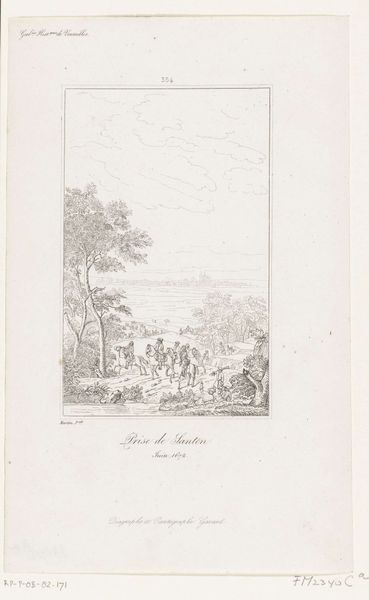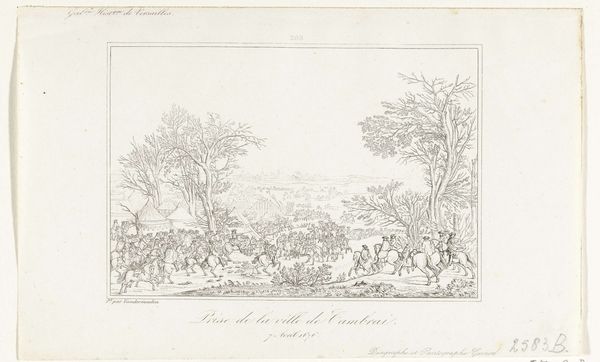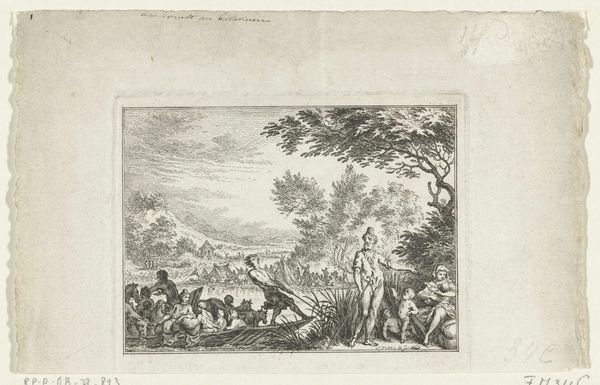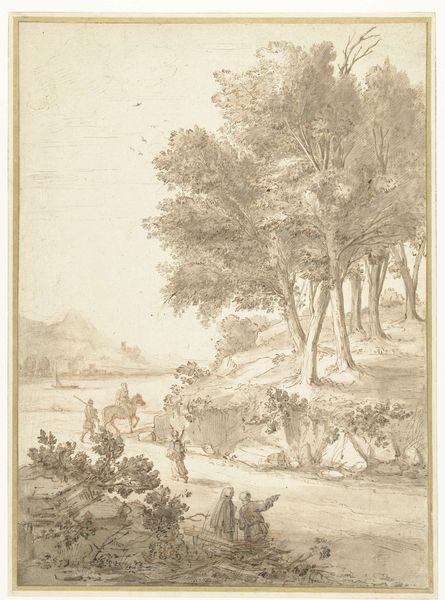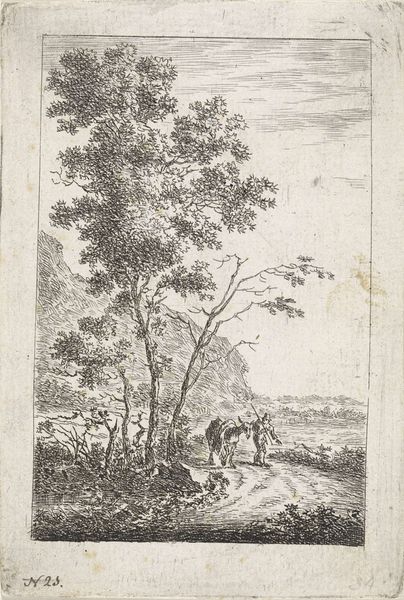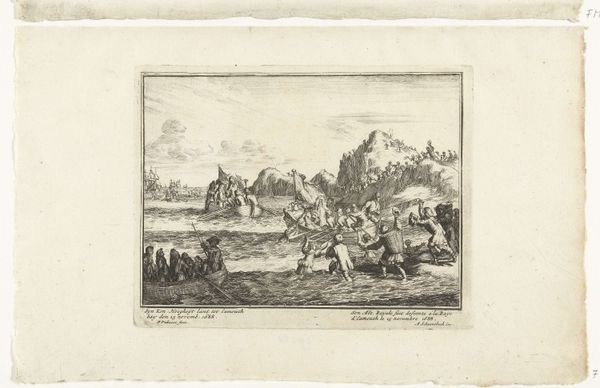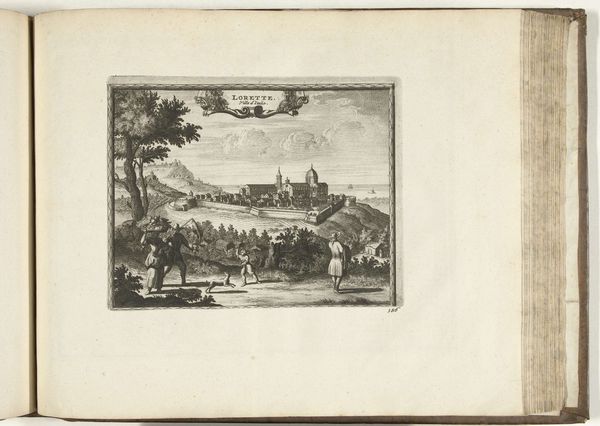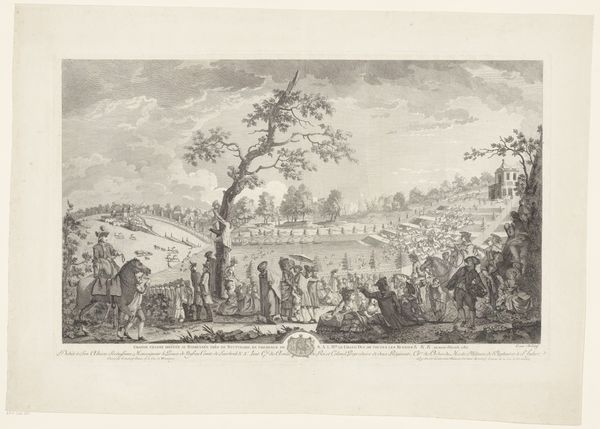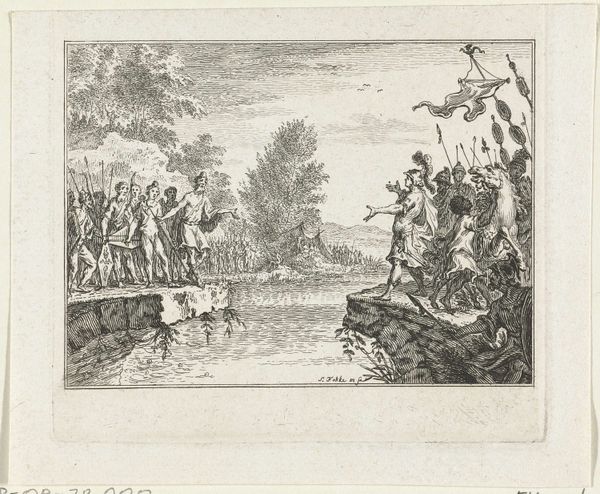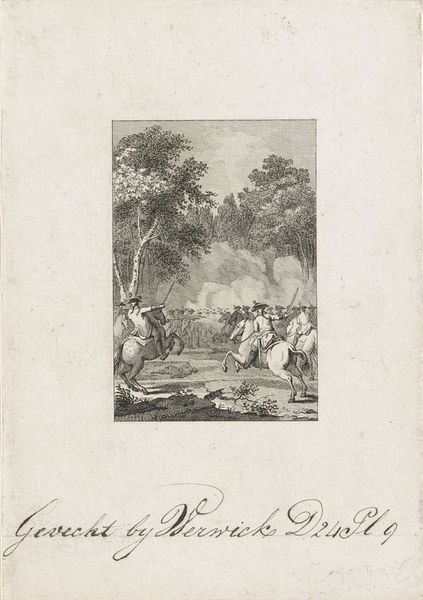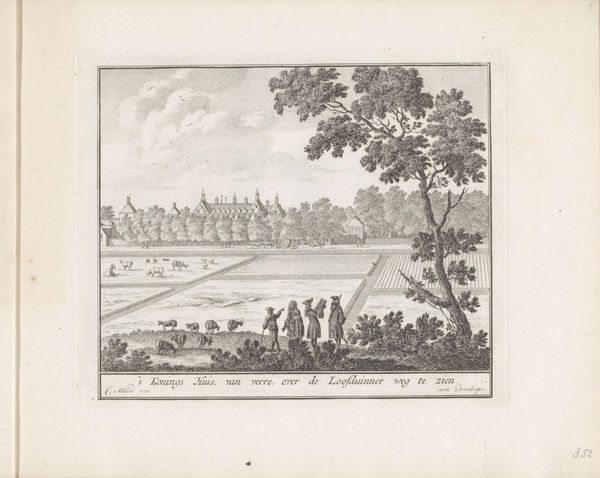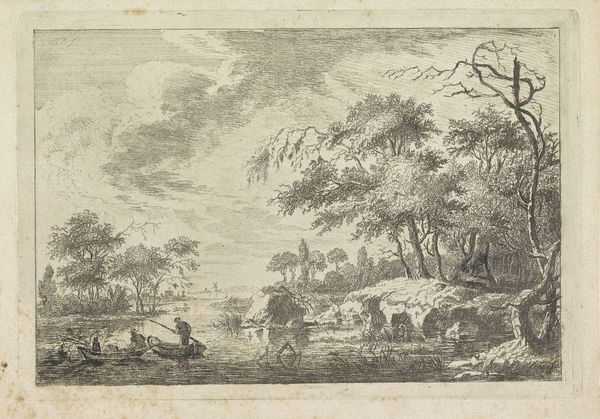
#
old engraving style
#
etching
#
personal sketchbook
#
sketchwork
#
pen-ink sketch
#
pen work
#
sketchbook drawing
#
pencil work
#
storyboard and sketchbook work
#
initial sketch
Dimensions: height 230 mm, width 144 mm
Copyright: Rijks Museum: Open Domain
Editor: So, this is "Inname van Rheinberg, 1672," made sometime between 1835 and 1840 by Etienne Acille Réveil. It’s a print, quite delicate, with incredible detail despite the small scale. It has a somewhat melancholic, contemplative atmosphere to me, but what do you see in it? Curator: It strikes me immediately as a powerful meditation on the nature of power and transition. The light etches delicate, ephemeral details. We know "Inname van Rheinberg" translates to "Capture of Rheinberg". This artwork, created over a century later, serves as a cultural memory device. What symbols resonate with you here, particularly in the landscape? Editor: The receding landscape and the figures almost fading into the distance perhaps suggests the fading importance of the event over time? Or, does it underscore a theme of resilience, of something enduring? Curator: Exactly! Note how the trees are meticulously rendered yet seem to bear witness, not actively participate. The water, a classical symbol of change and purification, flows onward regardless of human conflict. Do you see how Réveil subtly transforms a historical military event into something far more universal, a reflection on the cyclical nature of history itself? Editor: I see what you mean! It is like the event, in the foreground, contrasts with the endless potential and scale suggested by the landscape. Almost like a stage. Curator: Precisely. By focusing on the psychological space of the image and embedding it with subtle symbolic cues drawn from the landscape, Réveil speaks to a deeper narrative—the lasting, if often invisible, imprint of historical events on the collective psyche. He makes you question what remains of events, outside of memories. Editor: I never would have considered the emotional weight of the landscape itself. I appreciate learning about how he infused cultural memory with visual symbolism!
Comments
No comments
Be the first to comment and join the conversation on the ultimate creative platform.
